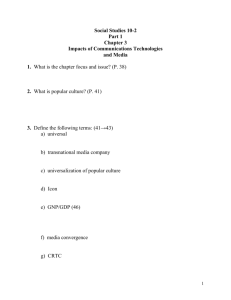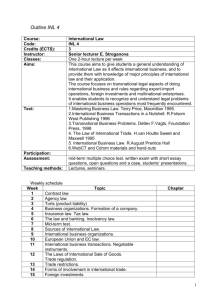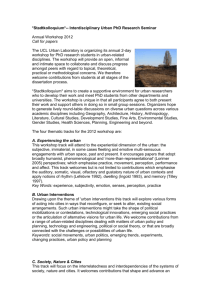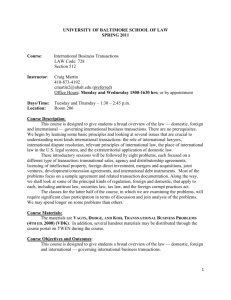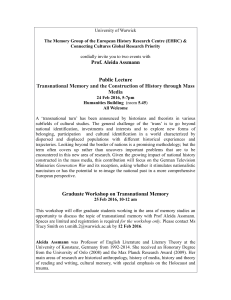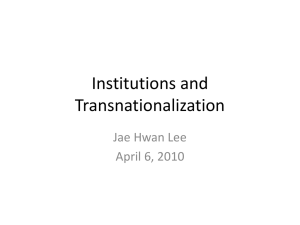Transnational Networks and New Security Threats
advertisement
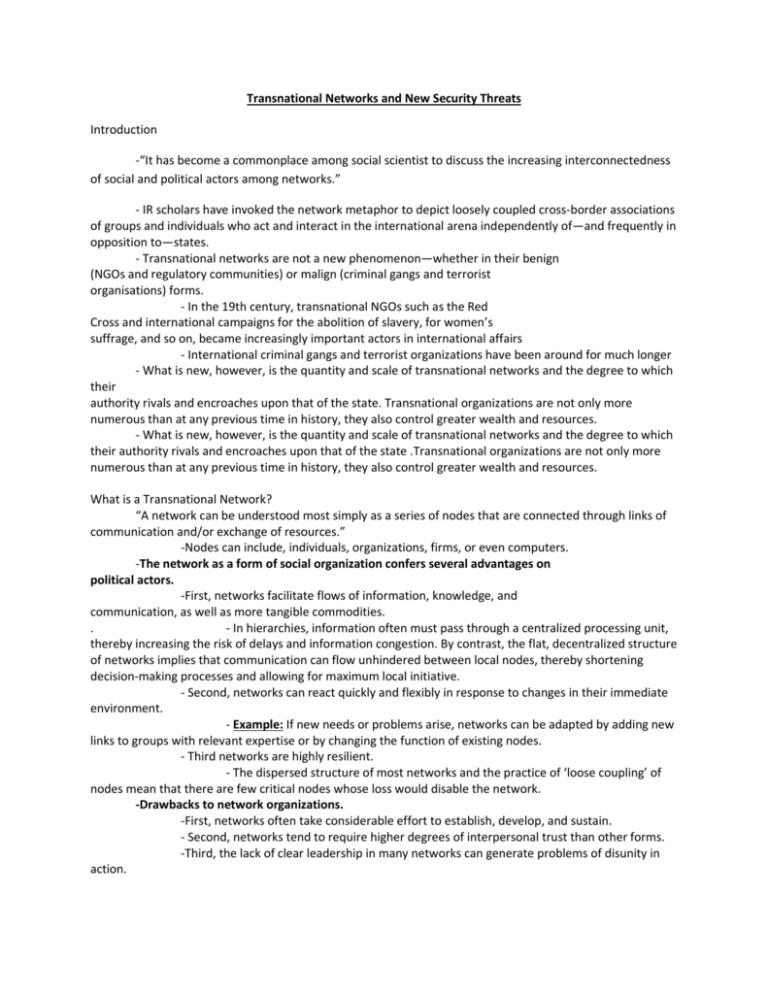
Transnational Networks and New Security Threats Introduction -“It has become a commonplace among social scientist to discuss the increasing interconnectedness of social and political actors among networks.” - IR scholars have invoked the network metaphor to depict loosely coupled cross-border associations of groups and individuals who act and interact in the international arena independently of—and frequently in opposition to—states. - Transnational networks are not a new phenomenon—whether in their benign (NGOs and regulatory communities) or malign (criminal gangs and terrorist organisations) forms. - In the 19th century, transnational NGOs such as the Red Cross and international campaigns for the abolition of slavery, for women’s suffrage, and so on, became increasingly important actors in international affairs - International criminal gangs and terrorist organizations have been around for much longer - What is new, however, is the quantity and scale of transnational networks and the degree to which their authority rivals and encroaches upon that of the state. Transnational organizations are not only more numerous than at any previous time in history, they also control greater wealth and resources. - What is new, however, is the quantity and scale of transnational networks and the degree to which their authority rivals and encroaches upon that of the state .Transnational organizations are not only more numerous than at any previous time in history, they also control greater wealth and resources. What is a Transnational Network? “A network can be understood most simply as a series of nodes that are connected through links of communication and/or exchange of resources.” -Nodes can include, individuals, organizations, firms, or even computers. -The network as a form of social organization confers several advantages on political actors. -First, networks facilitate flows of information, knowledge, and communication, as well as more tangible commodities. . - In hierarchies, information often must pass through a centralized processing unit, thereby increasing the risk of delays and information congestion. By contrast, the flat, decentralized structure of networks implies that communication can flow unhindered between local nodes, thereby shortening decision-making processes and allowing for maximum local initiative. - Second, networks can react quickly and flexibly in response to changes in their immediate environment. - Example: If new needs or problems arise, networks can be adapted by adding new links to groups with relevant expertise or by changing the function of existing nodes. - Third networks are highly resilient. - The dispersed structure of most networks and the practice of ‘loose coupling’ of nodes mean that there are few critical nodes whose loss would disable the network. -Drawbacks to network organizations. -First, networks often take considerable effort to establish, develop, and sustain. - Second, networks tend to require higher degrees of interpersonal trust than other forms. -Third, the lack of clear leadership in many networks can generate problems of disunity in action. Criminal Networks, New Security Threats, and the Myth of Declining State Authority - While much attention has been given in the past to the transnational organization of human rights groups and social and environmental activists there is a growing focus in the current IR literature on ways in which transnational networks are being used for criminal purposes. - the globalization of trade, communication, and transportation has provided new incentives and opportunities for transnational organization among criminals and terrorist groups. -Elke Krahmann draws attention to a variety of non-traditional security threats from networked private actors, ranging from drug trafficking and organized crime to arms proliferation and terrorism. - The recent growth in transnational criminal activity can be linked to a variety of factors. -First, advances in information and communication technology facilitate coordination among criminal groups in different countries because information flows are becoming quicker, cheaper, and more secure. - Second, the development of global financial and banking systems and the introduction of ‘digital money’ have acted as a stimulus to illicit networks by enabling swift transfers of funds that are difficult to track and control. - A third factor has been the increasing levels of migration, which promote the growth of cross-border social networks that can be mobilized by political actors. - Finally, transnational crime is favored by legal and regulatory differences among states, which create ‘safe havens’ for certain activities, where the risk of law enforcement is low. - Transnational networks, it is argued, provide criminals with a degree of adaptability, flexibility, and covertness that places law enforcers at a disadvantage. - Yet, criminal actors are not alone in exploiting the network form. Governments are increasingly replacing traditional modes of international cooperation—international treaties, institutional cooperation— with more flexible ‘networked’ instruments. These include informal ties among central bankers, financial intelligence units, national intelligence operatives, diplomats, and law enforcement agencies that share information, coordinate policies, and provide mutual enforcement assistance. Transnational Networks and New Security Threats - In brief, the discussion suggests that states are farfrom powerless when confronting networked threats. While we do see a range of new security threats from transnational networks—including political insurgency, terrorism, cybercrime, and drugs and people trafficking—the network form is also allowing states to help govern more efficiently. -Example-states appear to be reaching out to private actors to enhance regulatory and law enforcement capacities. Conclusion - It would be too quick to conclude, therefore, that, since the network form empowers actors below and above the nation-state, the result is an inevitable erosion of the ability of states to guarantee security. A more plausible conjecture is that transnational networks are reshaping the inter national security environment, changing the way security is supplied and prompting states to form new alliances with one another and with private actors to effectively address common security problems.



